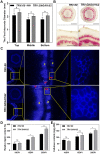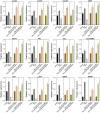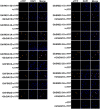DELLA-NAC Interactions Mediate GA Signaling to Promote Secondary Cell Wall Formation in Cotton Stem
- PMID: 34305962
- PMCID: PMC8299300
- DOI: 10.3389/fpls.2021.655127
DELLA-NAC Interactions Mediate GA Signaling to Promote Secondary Cell Wall Formation in Cotton Stem
Abstract
Gibberellins (GAs) promote secondary cell wall (SCW) development in plants, but the underlying molecular mechanism is still to be elucidated. Here, we employed a new system, the first internode of cotton, and the virus-induced gene silencing method to address this problem. We found that knocking down major DELLA genes via VIGS phenocopied GA treatment and significantly enhanced SCW formation in the xylem and phloem of cotton stems. Cotton DELLA proteins were found to interact with a wide range of SCW-related NAC proteins, and virus-induced gene silencing of these NAC genes inhibited SCW development with downregulated biosynthesis and deposition of lignin. The findings indicated a framework for the GA regulation of SCW formation; that is, the interactions between DELLA and NAC proteins mediated GA signaling to regulate SCW formation in cotton stems.
Keywords: DELLA proteins; NAC proteins; cotton stem; gibberellin; secondary cell wall formation.
Copyright © 2021 Wang, Yu, Ran, Chen, Wang, Dou, Qin, Suo, Li, Zeng, Liang, Dai, Wu, Ouyang and Xiao.
Conflict of interest statement
The authors declare that the research was conducted in the absence of any commercial or financial relationships that could be construed as a potential conflict of interest.
Figures






References
LinkOut - more resources
Full Text Sources

